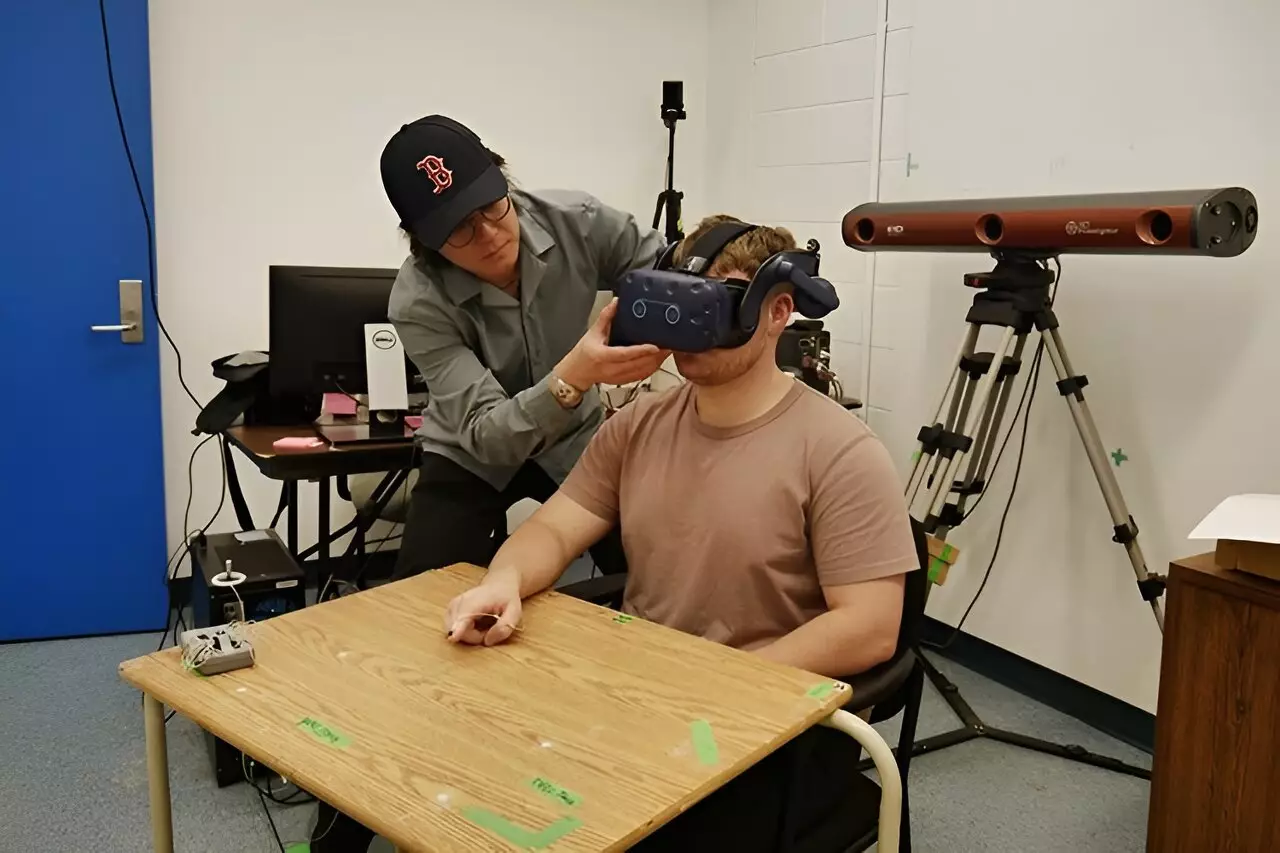In a recent study conducted by researchers at the University of Toronto, the use of virtual and augmented reality (VR and AR) technologies was found to have a significant impact on how individuals perceive and interact with the real world. The study, which was published in the journal Scientific Reports, revealed that participants exhibited changes in their movement patterns after using VR and AR, leading to temporary errors in movement when returning to the real world.
One of the key findings of the study was that individuals who used VR tended to undershoot their targets, failing to reach far enough, while those who used AR tended to overshoot their targets, reaching too far. These effects were most noticeable immediately after using VR or AR, but gradually diminished as participants readjusted to real-world conditions. Interestingly, the researchers noted that the effects of AR wore off more quickly compared to VR, with participants adapting back to real-world movements faster after using AR.
The researchers emphasized the importance of understanding how the use of VR and AR technologies can impact real-world performance, especially in industries that rely on these technologies for training purposes. They pointed out that transferring skills learned in VR or AR to the real world may present challenges, particularly in professions such as surgery, aviation, and driving. By recognizing the limitations and effects of VR and AR on physical tasks, organizations can ensure that these technologies are used effectively and safely for skill development.
Future Research and Considerations
Moving forward, the researchers plan to investigate how different types of VR and AR experiences, such as more complex or immersive scenarios, influence real-world performance. They are also interested in exploring how factors like training duration and individual differences in prior experience with these technologies can affect adaptation and readjustment. By gaining a deeper understanding of how VR and AR impact physical tasks, the researchers hope to design systems that minimize negative after-effects and optimize the potential of these technologies for training and skill development.
The study conducted at the University of Toronto sheds light on the transformative effects of VR and AR on everyday physical tasks. By uncovering the ways in which these technologies alter movement patterns and influence real-world performance, the researchers have highlighted the need for careful consideration when integrating VR and AR into training programs. As the use of VR and AR becomes more prevalent across various industries, it is essential to continue exploring how these technologies can be utilized effectively to enhance skill development while mitigating potential challenges.


Leave a Reply